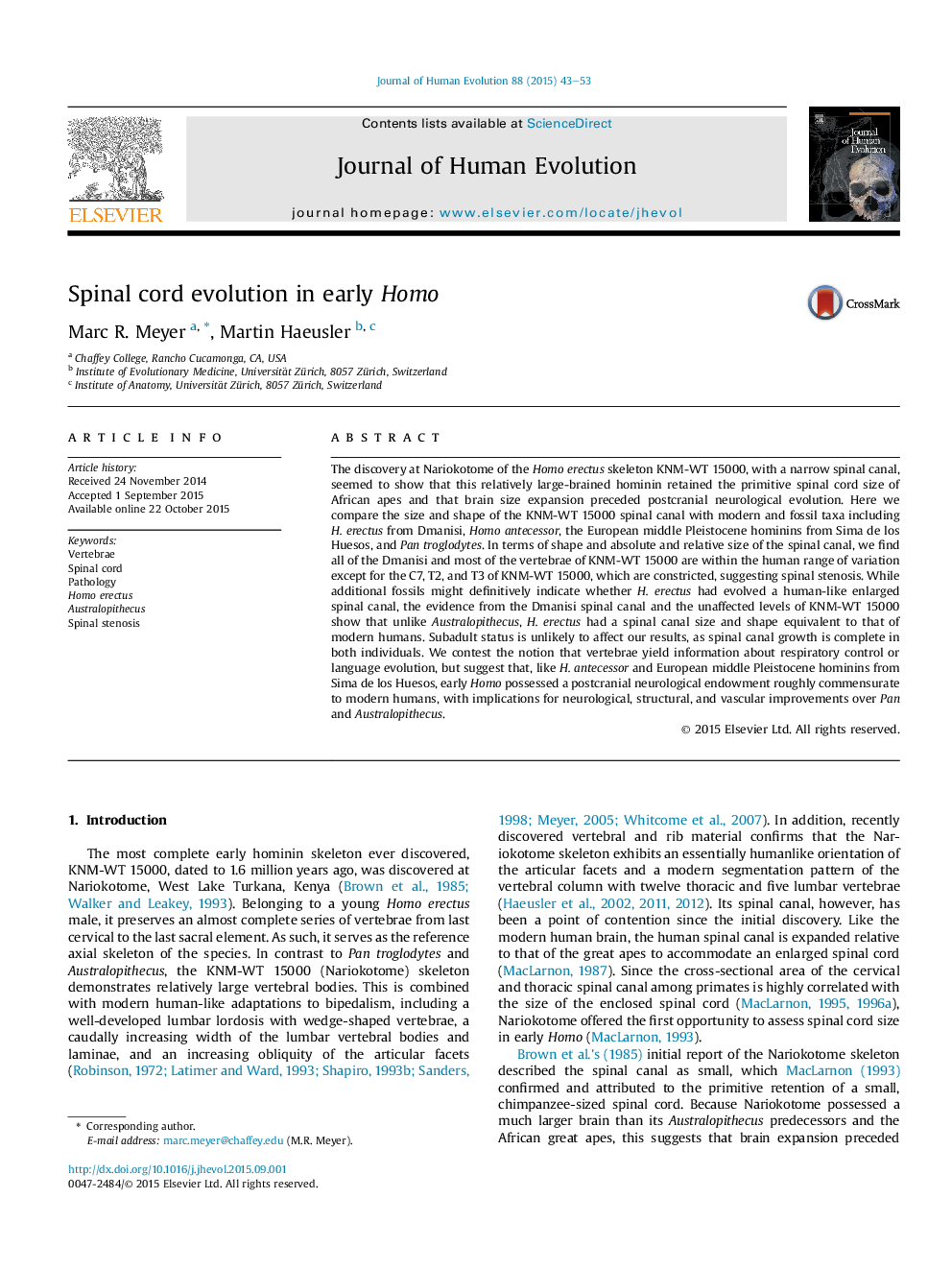| کد مقاله | کد نشریه | سال انتشار | مقاله انگلیسی | نسخه تمام متن |
|---|---|---|---|---|
| 4555883 | 1628161 | 2015 | 11 صفحه PDF | دانلود رایگان |
The discovery at Nariokotome of the Homo erectus skeleton KNM-WT 15000, with a narrow spinal canal, seemed to show that this relatively large-brained hominin retained the primitive spinal cord size of African apes and that brain size expansion preceded postcranial neurological evolution. Here we compare the size and shape of the KNM-WT 15000 spinal canal with modern and fossil taxa including H. erectus from Dmanisi, Homo antecessor, the European middle Pleistocene hominins from Sima de los Huesos, and Pan troglodytes. In terms of shape and absolute and relative size of the spinal canal, we find all of the Dmanisi and most of the vertebrae of KNM-WT 15000 are within the human range of variation except for the C7, T2, and T3 of KNM-WT 15000, which are constricted, suggesting spinal stenosis. While additional fossils might definitively indicate whether H. erectus had evolved a human-like enlarged spinal canal, the evidence from the Dmanisi spinal canal and the unaffected levels of KNM-WT 15000 show that unlike Australopithecus, H. erectus had a spinal canal size and shape equivalent to that of modern humans. Subadult status is unlikely to affect our results, as spinal canal growth is complete in both individuals. We contest the notion that vertebrae yield information about respiratory control or language evolution, but suggest that, like H. antecessor and European middle Pleistocene hominins from Sima de los Huesos, early Homo possessed a postcranial neurological endowment roughly commensurate to modern humans, with implications for neurological, structural, and vascular improvements over Pan and Australopithecus.
Journal: Journal of Human Evolution - Volume 88, November 2015, Pages 43–53
